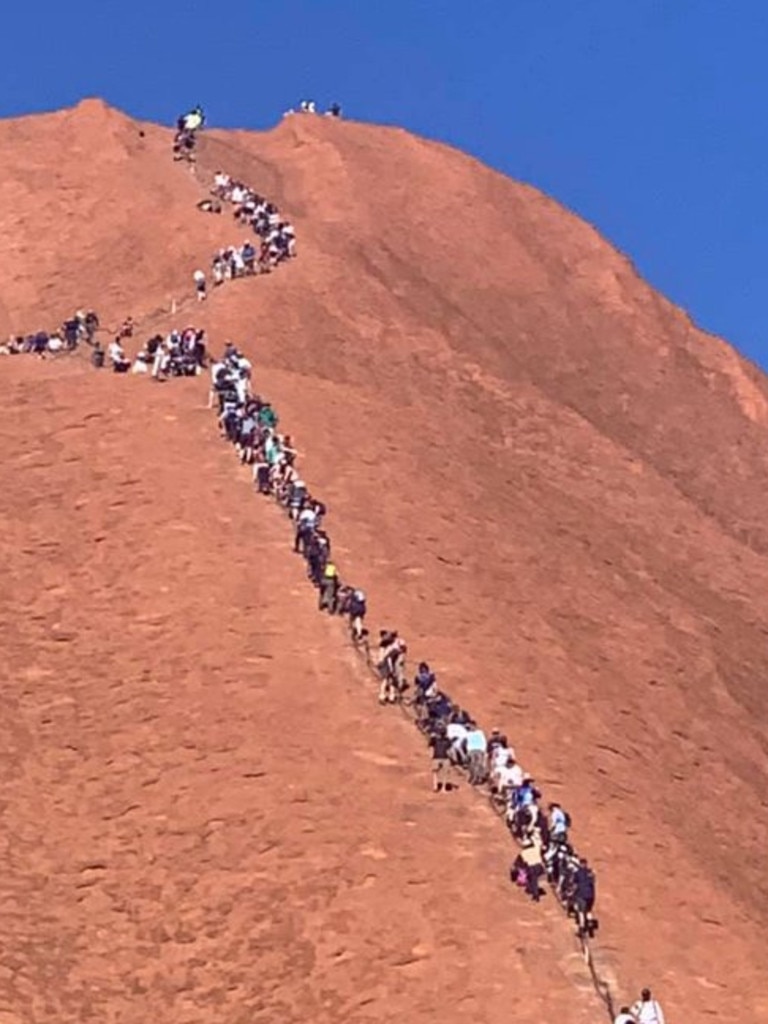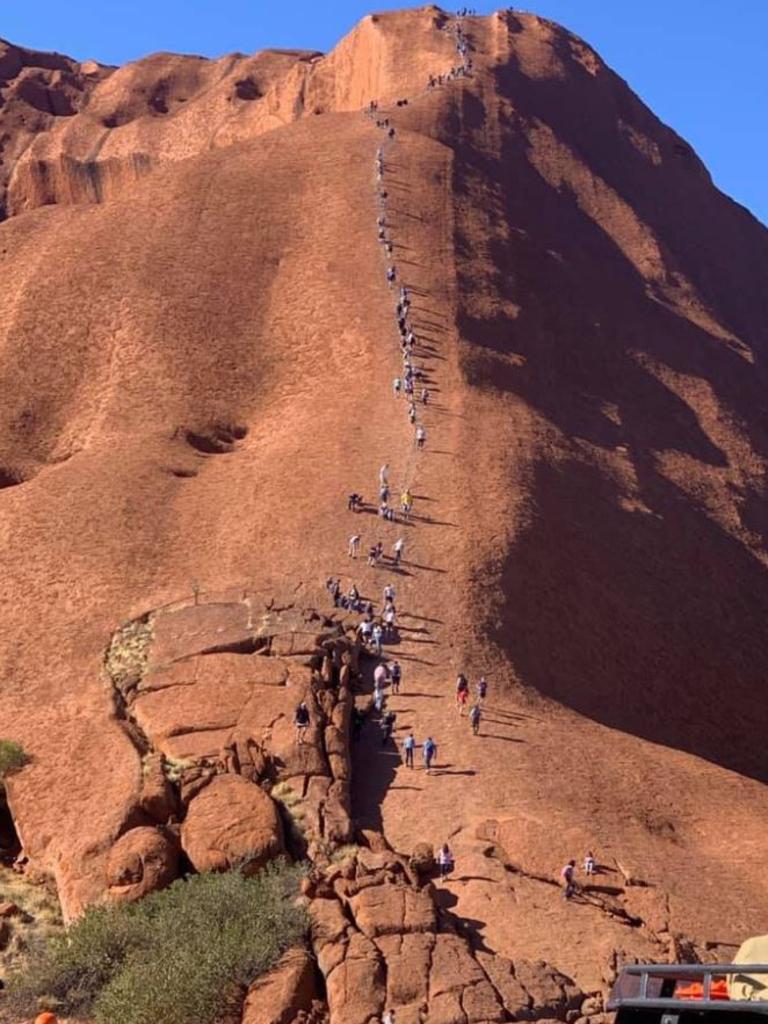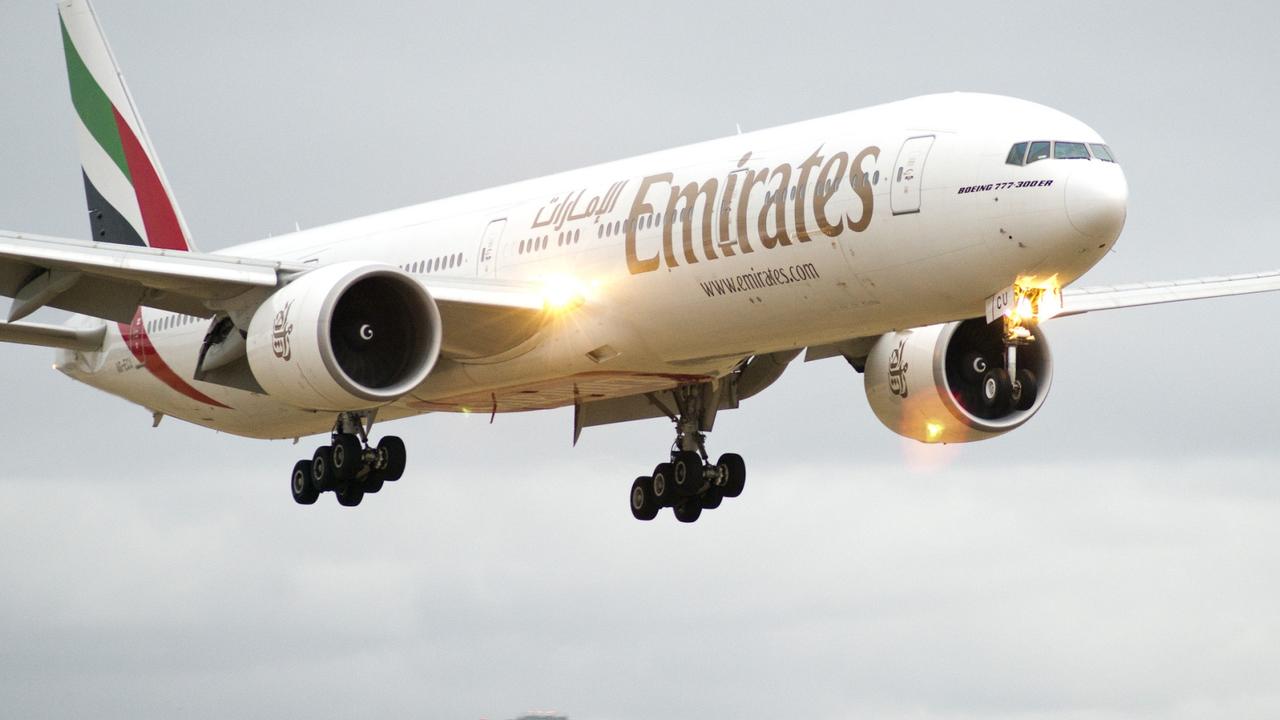Tourists storm up Uluru before climbing is banned later this month
Climbing Uluru will be banned in three weeks and a new photograph shows tourists are wasting no time to storm up the indigenous heritage site.
The first long weekend of the warmer months usually results in traffic chaos as campers and fishermen flock to their favourite hideaways.
But rarely do long queues invoke so much cultural offence as a new image from Uluru shows thousands of tourists stomping up the indigenous heritage site before the climb closes on October 26.
The Australian’s northern correspondent Amos Aikman took the photograph, revealing a snake of more than 1000 Australian and international visitors embarking on the journey at least twice this week.
Tourists are exploiting the school holidays to stroll on the monolith despite the Aboriginal community clearly detailing the insult caused.

For better or worse the final ascent of Uluru... Perspectives from both sides by @amosaikman @australianhttps://t.co/qhQHplGJDi
— Nicholas Adams-Dzierzba (@NicholasAddams) October 4, 2019
Uluru-Kata Tjuta National Park Board announced in 2017 that tourists would be banned from climbing the rock with figures at the time revealing a large portion of visitors respected the heritage of the site — just 20 per cent of visitors climbed, down from 70 per cent in previous decades.
About 140 people were climbing the rock each day when the decision was made but that number skyrocketed recently to between 300 and 500 people as the climb ban approaches.
And it appears those numbers have surged.
Uluru is sacred to indigenous Australians and thought to have started forming about 550 million years ago.
A number of disgusted Aussies jumped on social media to condemn the blatant disregard of the tourists “scrambling” up the site.
“What is WRONG with people,” one Twitter user questioned.
In reply another said: “How about if we go climb on their homes? Bunch of friggen bogan morons.”
And another: “It’s a shame there’s no export market for morons.”
Others had a different view, however: “Watch the tourist revenue drop off and the locals start whining to the guvvy (government) that they don’t have enough money … LOL.”
What is WRONG with people?! #Uluru pic.twitter.com/2cN544Mwem
— Stasia (@Stasia_hello) October 4, 2019
WHY CLIMBING WAS BANNED
The climb was always discouraged by the park’s traditional owners, the Anangu people, as it was deemed disrespectful due to the sacred nature of the area.
A 12-person board voted unanimously to close the rock on a very symbolic date — the 34-year anniversary of the day the Uluru land title was handed back to the Anangu people.
Chairman and senior traditional owner Sammy Wilson made an impassioned speech prior to the vote, explaining the sacred nature of the site.
“It is an extremely important place, not a playground or theme park like Disneyland,” he said. “If I travel to another country and there is a sacred site, an area of restricted access, I don’t enter or climb it, I respect it. It is the same here for Anangu. We welcome tourists here. We are not stopping tourism, just this activity.”
Crowded Everest
— John (@John_Hanna) October 4, 2019
Crowded Uluru pic.twitter.com/93zFlgyJfS
Mr Wilson ended his address with a call for unity. “The land has law and culture. We welcome tourists here. Closing the climb is not something to feel upset about but a cause for celebration. Let’s come together; let’s close it together.”
Despite closing the climb, there is still plenty for tourists to enjoy in the region.
“Activities at the Red Centre include camel rides, the Uluru Segway tour which takes visitors around the base of Uluru, a number of walking tracks including the Valley of the Winds at Kata Tjuta (the Olgas), Mala walk, outback cycling rides, Uluru motorcycle rides and even skydiving,” a spokesperson for Tourism NT told news.com.au. “Maruku Arts offers art, tours and workshops, and of course there are many sunrise/sunset tours on offer.”

A HISTORY OF THE CLIMB
Climbing the world-famous rock has long been considered disrespectful to the traditional owners and while it was technically legal, the Anangu people would politely ask people not to climb as it follows a sacred ceremonial path used in indigenous ceremony.
The climb has also damaged the rock itself, with a huge white scar from tourists walking the same path being visible from a distance.
A sign also sits at the base of the climb, imploring visitors to reconsider their need to scale the rock.


“We, the traditional Anangu owners have this to say,” the sign reads. “The climb is not prohibited but we ask you to respect our law and culture by not climbing Uluru. We have a responsibility to teach and safeguard visitors to our land. The climb can be dangerous. Too many people have died while attempting to climb Uluru,” it reads.
— with additional reporting from Adrianna Zappavigna
Do you think climbing Uluru is offensive? Comment below. @James_P_Hall | james.hall1@news.com.au




